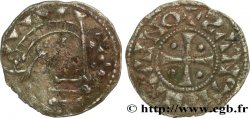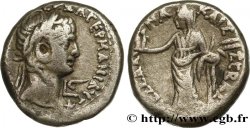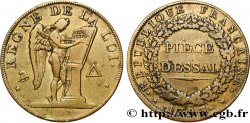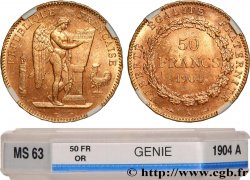bmv_472297 - MEROVINGIAN COINAGE - BANASSAC (BANNACIACO) - Lozere Triens, ELAFIVS monétaire
无库存.
所有在网站上销售的产品 (2019)
价格 : 4 500.00 €
所有在网站上销售的产品 (2019)
价格 : 4 500.00 €
种类 Triens, ELAFIVS monétaire
日期: c. 620-640
铸币厂名称/城市 Banassac (48)
材质 gold
直径 12 mm
模子方针 6 h.
重量 1,32 g.
稀少度 R2
关于品相的说明
Très rare monnaie, avec un superbe revers de frappe vigoureuse mais un peu décentrée. Avers complet mais de frappe très trefflée
出版目录中的项代码 :
家谱
Cet exemplaire provient de la collection Raymond D. (1948-2017). C’est le n° 84 de la vente BURGAN du 23 décembre 1991 (17.000 fr). C’est l’exemplaire de la collection Ponton d’Amécourt, illustrant le Belfort pour les n° 652 et 654. Il a été publié par Robert en 1879, p. 64, n° 5, pl. IX, n° 28 et en 1883 par Ponton d’Amécourt dans les Monnaies du Gévaudan, pl. II, n° 4 et 6.
Analysé par A. Pol, ce triens CMM 12201 est titré à 79% d’or.
正面
正面的文字 PAX.
正面的说明书 Tête laurée à droite, le cou non perlé ; légende en 3 lettres devant le visage et une sorte de couronne végétale autour.
背面
背面的文字 ELAFIVS MONET.
背面的说明书 Calice à deux anses, surmonté d’une croisette ; légende autour avec une sorte de couronne végétale autour.
评论
Pour ce type 12-2B 10, avec la légende PAX au droit, seulement trois exemplaires sont recensés ; le Belfort 652 = 654 (cet exemplaire), le n° 74 de la vente Weil d’avril 1991, et le n° 84 de la vente Burgan de décembre 1991.
Ce type pourrait être à rapprocher des émission de Caribert II (629-632), le demi frère du roi Dagobert Ier..
For this type 12-2B 10, with the legend PAX on the obverse, only three examples are recorded; Belfort 652 = 654 (this example), no. 74 from the Weil sale of April 1991, and no. 84 from the Burgan sale of December 1991. This type could be related to the issues of Caribert II (629-632), the half-brother of King Dagobert I.
Ce type pourrait être à rapprocher des émission de Caribert II (629-632), le demi frère du roi Dagobert Ier..
For this type 12-2B 10, with the legend PAX on the obverse, only three examples are recorded; Belfort 652 = 654 (this example), no. 74 from the Weil sale of April 1991, and no. 84 from the Burgan sale of December 1991. This type could be related to the issues of Caribert II (629-632), the half-brother of King Dagobert I.








 对产品描述纠错
对产品描述纠错 打印
打印 分享我的选择
分享我的选择 提问
提问 Consign / sell
Consign / sell
 产品介绍
产品介绍











